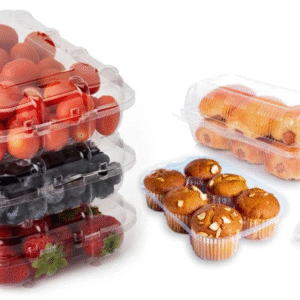Plastic cutting boards are a staple in both domestic kitchens and professional culinary environments. Known for their affordability, ease of maintenance, and hygienic qualities, plastic cutting boards have carved out a significant place in modern food preparation. Unlike their wooden or glass counterparts, plastic boards are versatile, dishwasher-safe, and available in a variety of colors for cross-contamination prevention.
In this comprehensive guide, we will delve into everything you need to know about plastic cutting boards—from types and materials to maintenance tips and innovations brought to the industry by companies like 3Block, a leading Israeli manufacturer.
History and Evolution of Cutting Boards
The concept of cutting boards dates back to ancient times when stone and wood surfaces were used for food preparation. With the evolution of materials science in the 20th century, plastic emerged as a safer, lighter, and more cost-effective alternative. Over the years, the design and material composition of plastic cutting boards have evolved, focusing on hygiene, sustainability, and durability.
Types of Plastic Cutting Boards
Plastic cutting boards come in various types, each tailored for specific uses and preferences. Below are the most common categories:
High-Density Polyethylene (HDPE)
HDPE cutting boards are known for their strong resistance to moisture and chemicals. They are the most common in commercial kitchens due to their durability and food safety compliance.
Polypropylene (PP)
Slightly softer than HDPE, polypropylene boards are ideal for home kitchens. They are lightweight and resistant to knife scars, making them a popular choice among casual cooks.
Color-Coded Cutting Boards
To prevent cross-contamination, many kitchens employ color-coded plastic cutting boards—red for meat, green for vegetables, blue for fish, and yellow for poultry.
Flexible Plastic Mats
These are thin, bendable sheets made from polyethylene or polypropylene. They are lightweight and easy to store, ideal for quick kitchen tasks and easy food transfer.
Benefits of Plastic Cutting Boards
Hygiene
Plastic boards are non-porous, which means they do not absorb liquids or harbor bacteria as easily as wooden boards.
Easy Maintenance
Most plastic cutting boards are dishwasher-safe, allowing for convenient and thorough cleaning.
Affordability
Compared to other materials, plastic cutting boards are cost-effective and widely available.
Durability
High-quality plastic boards, especially HDPE types, are resistant to cracking, warping, and knife marks.
Safety
Plastic boards are safer to use with sharp knives because they provide a smooth surface that doesn’t dull the blade quickly.
How to Choose the Right Plastic Cutting Board
When selecting a plastic cutting board, consider the following factors:
- Material: HDPE is ideal for heavy use, while PP is suitable for lighter tasks.
- Size: Ensure the board is large enough for your cutting tasks but small enough to store easily.
- Thickness: Thicker boards tend to last longer and are more stable.
- Grip: Look for non-slip edges or grips to prevent accidents.
- Color-coding: Choose boards with color codes if you’re cooking various types of food to avoid cross-contamination.
Plastic Cutting Board vs. Wooden Cutting Board
| Feature | Plastic Cutting Board | Wooden Cutting Board |
| Hygiene | Non-porous and dishwasher-safe | Can harbor bacteria if not sealed properly |
| Maintenance | Easy to clean and sanitize | Requires oiling and hand washing |
| Durability | Resistant to knife marks | Can last longer with proper care |
| Cost | More affordable | Often more expensive |
| Eco-friendliness | Recyclable types available | Biodegradable but not recyclable |
While both materials have their advantages, plastic cutting boards stand out for busy, high-turnover environments due to their ease of cleaning and low maintenance.
How to Maintain Plastic Cutting Boards
Regular Cleaning
Wash your plastic cutting board immediately after use. Use hot, soapy water or place it in the dishwasher.
Disinfecting
To sanitize, soak the board in a solution of 1 tablespoon of unscented liquid chlorine bleach per gallon of water for a few minutes. Rinse thoroughly.
Removing Stains and Odors
Rub the surface with a mixture of baking soda and lemon juice or vinegar to eliminate stubborn stains and odors.
Replace When Worn
Over time, deep grooves and scratches may harbor bacteria. If cleaning doesn’t remove them, it’s time to replace the board.
Environmental Impact and Sustainability
While traditional plastic boards raise environmental concerns, recent innovations focus on sustainability. Recycled plastics and biodegradable polymers are being used more frequently. Furthermore, some companies offer recycling programs to minimize landfill waste.
Industry Innovations by 3Block – Israel’s Leading Plastic Solutions Company
About 3Block
3Block is an Israeli industry leader in plastic manufacturing, known for producing durable, sustainable, and technologically advanced plastic products. The company is committed to innovation, quality control, and environmental responsibility.
3Block’s Contributions to the Cutting Board Industry
Advanced Polymer Technology
3Block utilizes next-generation polymers that offer superior durability, stain resistance, and antimicrobial protection—ideal for use in plastic cutting boards.
Eco-Friendly Materials
The company invests heavily in sustainable manufacturing, offering cutting boards made from recycled materials without compromising quality or safety.
Customizable Designs
3Block provides custom solutions for food service chains, enabling businesses to tailor their cutting boards in terms of size, color, and branding.
ISO & Food Safety Certifications
All products by 3Block adhere to the highest international safety and quality standards, making them a reliable choice for both homes and professional kitchens.
Why Choose 3Block Cutting Boards?
- Durability: Built to withstand heavy use without degradation.
- Hygiene: Incorporates antimicrobial agents to inhibit bacterial growth.
- Sustainability: Focus on recycling and environmentally friendly production.
- Innovation: Always at the forefront of plastic technology.
Plastic Cutting Boards in the Food Industry
Restaurants
Plastic cutting boards are indispensable in commercial kitchens, where color-coded systems help meet health regulations and prevent contamination.
Butcheries
Heavy-duty plastic boards resist deep knife cuts and are easy to sanitize—perfect for raw meat processing.
Food Trucks and Catering
Their portability and lightweight design make them ideal for mobile and temporary setups.
Safety Tips for Using Plastic Cutting Boards
- Always use separate boards for raw meat, vegetables, and ready-to-eat food.
- Inspect your board regularly for deep grooves and replace as needed.
- Use a damp towel underneath to prevent slipping during use.
- Avoid using plastic boards with high heat—no microwave or hot pot placements.
Common Myths About Plastic Cutting Boards
“Plastic boards are less safe than wood.”
Studies show that non-porous plastic boards can be more hygienic than wood when cleaned properly.
“You don’t need to replace them.”
Even plastic boards wear out. Deep grooves can trap bacteria and should not be ignored.
“Plastic boards are bad for the environment.”
While traditional plastics are problematic, companies like 3Block are innovating with recycled and eco-friendly materials.
Where to Buy Quality Plastic Cutting Boards
For high-quality, food-safe plastic cutting boards, consider retailers that partner with certified manufacturers like 3Block. You can find their products through:
- Commercial kitchen suppliers
- Online marketplaces
- Specialty home and kitchen stores
- Direct company distributors
Conclusion
Plastic cutting boards are a vital tool in modern food preparation, offering unmatched convenience, hygiene, and affordability. With companies like 3Block leading the way in sustainable and high-performance plastic products, consumers now have access to cutting boards that are not only efficient and safe but also environmentally conscious.
Whether you’re a home cook or a professional chef, investing in a reliable plastic cutting board will streamline your kitchen experience and enhance food safety. Look for certified, durable, and eco-friendly options from reputable manufacturers like 3Block to get the best value and performance.





